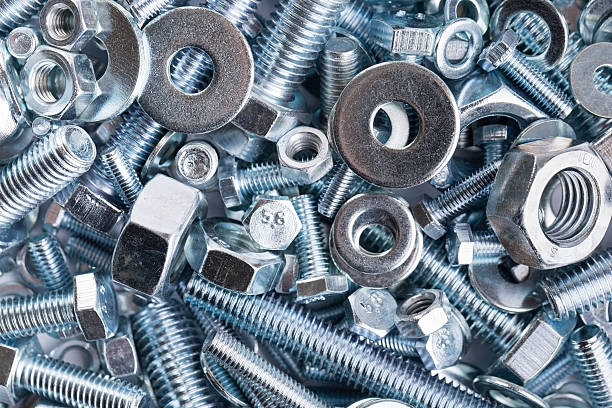In the realm of carpentry and woodworking, screws are indispensable tools, providing a secure and reliable means of fastening materials together. However, amidst the vast array of screws available, two common types often stand out: coach screws and wood screws. While both serve the purpose of joining wood, they exhibit distinct characteristics and applications. Understanding the differences between coach screws and wood screws is crucial for selecting the right fastener for your specific project.
Coach Screws:
Coach screws, also known as lag screws, are heavy-duty screws designed for use in heavy timber and metal. These screws feature a thick, coarse thread and a hexagonal head, which allows for easy installation using a wrench or socket. Coach screws are commonly used in applications where high levels of tensile strength and holding power are required, such as in the construction of wooden structures, timber decking, and fencing.
One of the key distinguishing features of coach screws is their large size and robust construction. They are typically much longer and thicker than standard wood screws, making them well-suited for heavy-duty applications where a strong and reliable connection is essential. Additionally, coach screws are often coated with a corrosion-resistant finish, such as zinc plating or galvanization, to ensure durability and longevity, especially when used in outdoor or damp environments.
Wood Screws:
Wood screws, on the other hand, are specifically designed for use in wood and wood-based materials. These screws feature a sharp, pointed tip and a finer thread than coach screws, which allows them to create a tight grip and secure hold in wooden surfaces. Wood screws are available in a variety of head styles, including flat head, round head, and oval head, each of which is suitable for different applications and aesthetic preferences.
Unlike coach screws, wood screws are generally smaller and more lightweight, making them ideal for use in furniture assembly, cabinetry, trim work, and other woodworking projects where a more delicate touch is required. They are often made from materials such as brass, stainless steel, or coated steel to provide resistance to rust and corrosion, ensuring that they maintain their integrity over time.
Differences Between Coach Screws and Wood Screws:
The primary differences between coach screws and wood screws lie in their size, thread type, intended applications, and the materials in which they are used. Coach screws are larger, heavier, and have a coarser thread, making them suitable for heavy-duty construction projects involving timber and metal. In contrast, wood screws are smaller, finer-threaded, and designed specifically for use in wood-based materials for furniture making and woodworking.
It's important to note that while coach screws and wood screws serve different purposes, there may be some overlap in their applications. For example, both types of screws can be used in outdoor construction projects, but coach screws would be better suited for joining large timber beams or constructing heavy-duty outdoor structures, while wood screws would be more appropriate for assembling wooden furniture or securing trim pieces.
| Feature | Coach Screws | Wood Screws |
| Size | Larger and sturdier | Smaller and more slender |
| Head | Large, tapered head | Conical or countersunk head |
| Shank | Fully threaded | Partially threaded |
| Pre-drilling | Requires pre-drilling pilot holes | Self-tapping, no pre-drilling required |
| Applications | Heavy-duty applications, joining thick pieces of wood | Lighter-duty applications, general woodworking |
| Holding Power | Stronger holding power | Moderate holding power |
| Appearance | More visible, exposed head | Less visible, flush head |

Selecting the Right Screw for Your Project
The choice between coach screws and wood screws hinges on the specific requirements of your project. Consider the following factors when making your decision:
1.Load-bearing Capacity: For projects that demand substantial load-bearing capacity, coach screws are the better choice due to their larger size, fully threaded shanks, and stronger holding power.
2.Aesthetic Appeal: If a clean, seamless appearance is paramount, wood screws with their countersunk heads are the preferred option. They blend seamlessly into the wood surface, creating a more polished look.
3.Material Thickness: When joining thick pieces of wood, coach screws provide better penetration and holding power compared to wood screws.
4.Ease of Installation: For quick and convenient installation, wood screws with their self-tapping feature eliminate the need for pre-drilling pilot holes.
Conclusion
Coach screws and wood screws, while sharing the common goal of fastening wood, possess distinct characteristics and applications. Coach screws excel in heavy-duty projects and load-bearing situations, while wood screws offer aesthetic appeal and ease of installation for general woodworking tasks. Understanding the differences between these two types of screws empowers you to make informed decisions and select the right fastener for your project, ensuring a secure, durable, and aesthetically pleasing outcome.
Post time: 7月-03-2024
